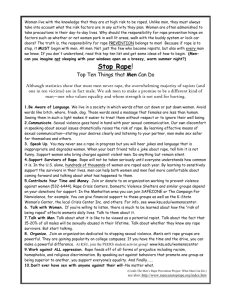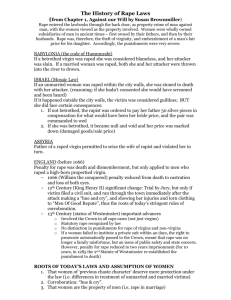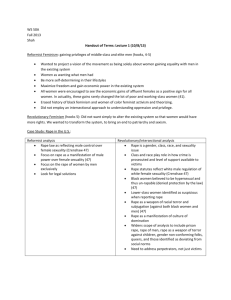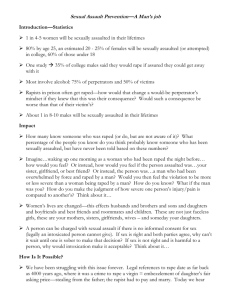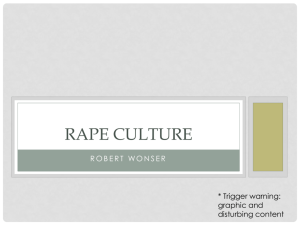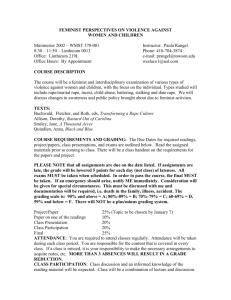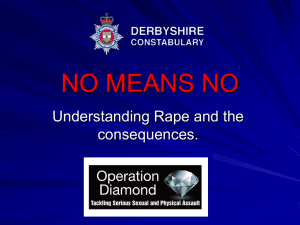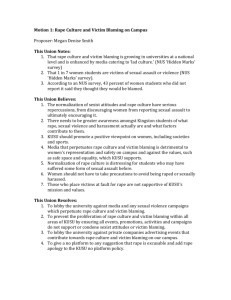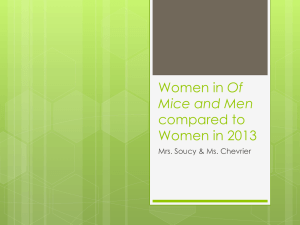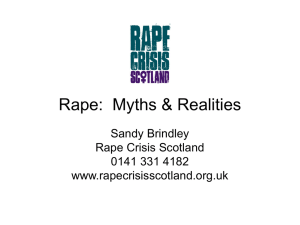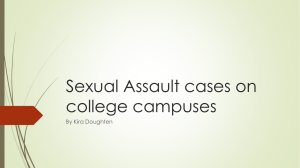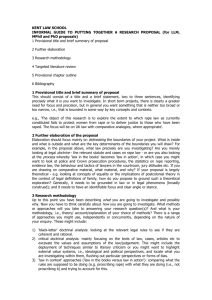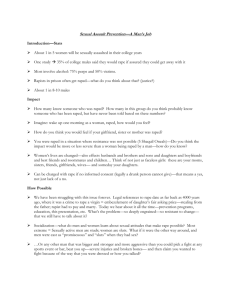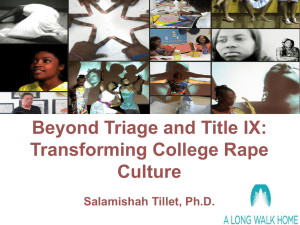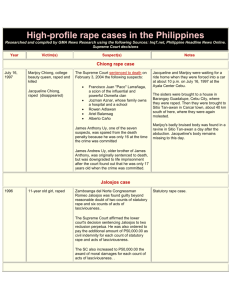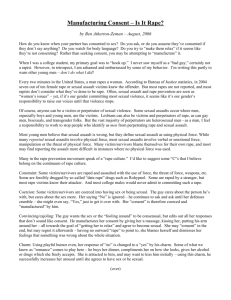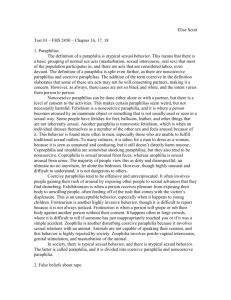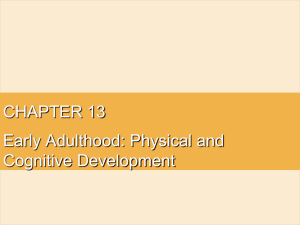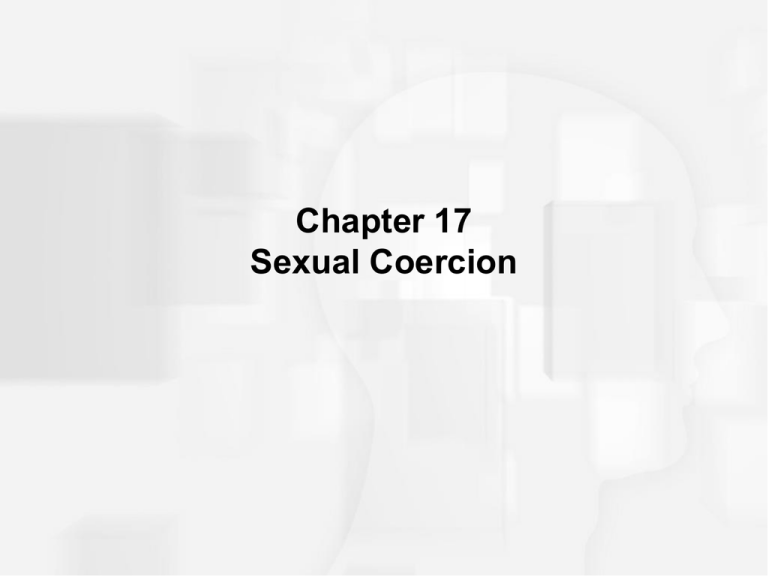
Chapter 17
Sexual Coercion
Types of Rape
• Stranger rape
• Acquaintance rape
• Date rape
• Statutory rape
Prevalence of Rape
• 11.9%-28% depending on study
• 1 in 6 women, 3% of men
• Underreported for many reasons
– Victim’s self-blame or denial
– Mistrust of police, legal system
– Fear of retaliation from rapist
– Concern about publicity
False Beliefs About Rape
•
•
•
•
•
•
“Women can’t be raped if they don’t want to be”
“Women say no when they mean yes”
“Many women ‘cry rape’”
“All women want to be raped”
“Rapists are obviously mentally ill”
“Men can’t control their sexual urges”
Psychosocial Bases of Rape
• Rape frequency influenced by the nature of
relations between the sexes
• Status of women
• Boy’s attitudes
– Rape-prone societies
– Societies with no rape
– Stereotyped gender roles
– Peer group acceptance
Characteristics of Rapists
• Embrace male-dominance
• Anger toward women
• Alcohol may contribute
• Self-centered; less sensitive
• History of progressively more violent sexual
offenses
Age Breakdown of Women Rape Victims
Acquaintance Rape:
Role of Perceptions & Communication
• Sexual scripts
• Misinterpretations & double messages
• Nonverbal communication
• Justification
Aftermath of Rape
• Initial feelings of shame, anger, fear, guilt,
powerlessness
• Self-blame
• Physical symptoms frequently occur
• Impaired sexual functioning
• PTSD; distress developed after trauma
• Less severe repercussions if counseling begun
ASAP
Sexual Abuse of Children
• Child-sexual abuse: adult sexual contact with a
child
• Sexual contact with a child is always coercive
because children cannot give informed consent
• Incest: with a relative
• Pedophilia or molestation: with a non-relative
Sexual Abuse of Children
• Prevalence
– Girls
– Boys
20-33%
9-16%
• Brother-sister & first cousin incest is most
common
• Father-daughter reported more & has greater
negative impact





